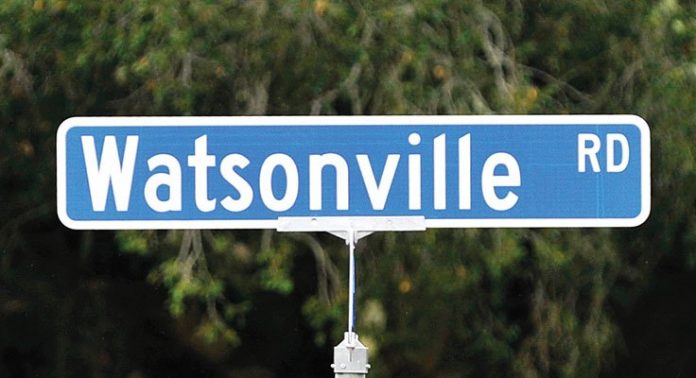Shiny blue street signs are popping up like wildflowers in South
County, but it’s not because of the rain.
Keeping up with government safety mandates is one reason Santa
Clara County is in the process of erecting 1,050 new street signs
on county roads.
Shiny blue street signs are popping up like wildflowers in South County, but it’s not because of the rain.
Keeping up with government safety mandates is one reason Santa Clara County is in the process of erecting 1,050 new street signs on county roads.
Ensuring quick and easy legibility is another.
In addition to being constructed from more durable sign material, the lettering for “Watsonville RD” at the intersection of Watsonville Road and Burchell Road has been increased from four inches to six.
“It’s supposed to help in the prevention of accidents,” explained Clarence Salim, assistant civil engineer for the Santa Clara County Roads & Airports Department.
The Federal Highway Administration is asking counties to comply with minimum retroreflectivity, or brightness, levels for two different categories of signs. One of these categories is for overhead guide signs and county street name signs, while the other entails regulatory signs.
Both phases have deadlines as well. For regulatory signs, it’s Jan. 22, 2015. For street name signs and overhead guide signs, the deadline is Jan. 22, 2018.
Salim said the county has begun to tackle the street name sign category, and the project – which has a $500,000 budget – is also addressing mast arm signs on expressways throughout South County and “other specific areas that were identified as riskier areas.”
As of Feb. 15, Salim said approximately 730 street name signs had been replaced at roughly $150 each. He estimated the total cost for the new county street signs including production and labor is about $125,000.
Salim said the winning bidder hired for the job is a corporation called Chrisp Company, which specializes in highway improvement product installations and has a branch in Fremont, according to the group’s website.
“We’re only doing it right now for nonurban areas,” explained Salim, mentioning unincorporated areas such as Gilroy, Morgan Hill and San Martin. “Which happened to be of course South County, where there is no lighting out there.”
He said sign implementation started in February with priority given to high-risk areas. This includes rural areas with less lighting and decreased visibility, plus locations with bigger traffic volumes and higher speed limits.
Santa Clara County isn’t the only agency instigating upgrades, for that matter.
From the Golden Gate Bridge to the Empire State Building, counties are slowly complying with new provisions set by the 2009 Manual on Uniform Traffic Control Devices.
The manual comes from the Federal Highway Administration and is more or less the “big yellow phone book of rules,” as one FHA spokesman put it, for all government-owned signs in the United States.
Road managers nationwide abide by its laws for maintaining traffic control devices, public streets, highways and bikeways, according to the FHA.
According to the FHA, counties do not need to execute a mass uprooting of all signs right away; rather the need for improvements should be based on a sign’s existing conditions and functionality. Depending on weather and traffic, a sign could last 15 to 20 years, the FHA said. If signs are currently meeting retroreflectivity standards, the FHA said it doesn’t need to be yanked out.
Salim pointed out the government has allotted a broad window to assess which signs need to be replaced.
Since the Roads & Airports Department already had funds set aside for transportation-related projects, Salim said the department killed two birds with one stone – meeting recommendations for increasing lettering size, as well as brightness requirements.
The money comes specifically from Prop. 1B, a voter-approved transportation bond passed in 2008 to help reduce traffic congestion, improve air quality and fund infrastructure improvements, according to the California Department of Transportation.
“We are a little more proactive maybe than some other agencies in changing the signs,” said Salim. “We’ve been told about this mandate, and we’ve just been trying to be as proactive as we can. Since we’ve got a funding source, we can go ahead and proceed with the project.”














